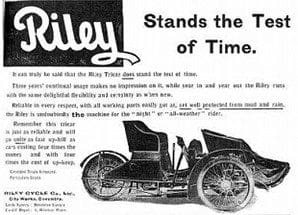
Riley 1901(1899)-1908 UK
Aged just 20, William Riley took over the family weaving business in Coventry in 1870, just as the city’s weavers were beginning to reel from the impact of cheaper imports – all sounds very familiar today! With his business suffering more and more, William bought Bonnick and Company, makers of bespoke cycles of King Street, Coventry, in an effort to diversify. Although initially retaining the Bonnick brand, the well-made cycles became known as the R&S.
Despite high price tags the top quality cycles sold well. In 1896 with sales continuing to rise the company was restructured to become the Riley Cycle Company. Gradually, as they became of age, William Riley’s sons joined the business and began experimenting with car designs in 1896 and three years later motorcycles. Their stand at the 1899 National Show at Crystal Palace, London, comprised 19 cycles, a Royal Riley Tricycle and a Quadricyle. Both owed a lot to De Dion Bouton design.
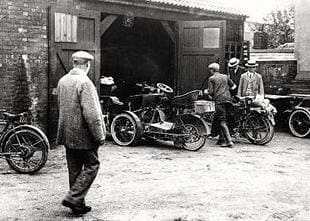 Tricycle production took off, in relative terms, and – suitably encouraged – Riley unveiled a neat 13⁄4hp motorcycle at the 1901 National Show. The Quadricycle was again on offer and could be converted to a tricycle by replacing the front two-wheel set-up with a single wheel – or vice versa to give a quadricycle again! Naming the two-wheeled models the Riley Moto-Bi the range doubled for 1902 with the option of 2hp Minerva or 23⁄4hp MMC power. During late 1902 Riley began redesigning the three-wheeler concept to give as standard two seats along with two wheels at the front and one rear.
Tricycle production took off, in relative terms, and – suitably encouraged – Riley unveiled a neat 13⁄4hp motorcycle at the 1901 National Show. The Quadricycle was again on offer and could be converted to a tricycle by replacing the front two-wheel set-up with a single wheel – or vice versa to give a quadricycle again! Naming the two-wheeled models the Riley Moto-Bi the range doubled for 1902 with the option of 2hp Minerva or 23⁄4hp MMC power. During late 1902 Riley began redesigning the three-wheeler concept to give as standard two seats along with two wheels at the front and one rear.
Son Percy Riley designed his own engine, initially an 8hp water cooled unit. With parental backing and their own money the three Riley brothers – Allan, Percy and Victor – established an engine manufacturing plant at Castle Works, Cook Street, Coventry. Manufacture began with three models: 21⁄4, 3 and 31⁄2hp singles; the largest could be used for tricars with either fan or water cooling. The new engines were the first British-made production units to have both inlet and exhaust valves mechanically operated. Percy went on to develop V-twin designs and make full use of the advantages of ‘valve overlap’ to enhance performance. Although separate companies, vehicle makers the Riley Cycle Company went over to use nothing but Riley brothers-built engines.
During 1904 three-wheeler design moved further and further away from the tricycle concept, with the tricars gaining revised chassis, handle starting, two-speed gear and all chain drive on some models. However, the company hadn’t lost faith with motorcycles and exhibited an impressive array of models at the 1904 National Show including the ‘Anti-Vibratory Lady’s Cycle’, the ‘Light as Air Lady’s Cycle’ and updated Moto-Bis from 2¾hp to 3½hp.
Riley tricars were continually improved with common engine options from 4hp singles to lusty 9hp V-twins for 1905. And they were gaining many trials awards too. Later in the year work began on four-wheel car development – as opposed to quadricycles – going on sale in 1906 and although the well-made and proven Moto-Bis were listed for another couple of years, they were to be dropped as car production took off.
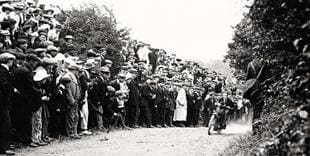 By 1908 motorcycle manufacture had all but ended, though cycle production struggled on until 1911. Finally in 1912 the Riley Cycle Company sold their car assembly business to the Riley brothers who made the engines and focused on building detachable wire wheels but no more vehicles.
By 1908 motorcycle manufacture had all but ended, though cycle production struggled on until 1911. Finally in 1912 the Riley Cycle Company sold their car assembly business to the Riley brothers who made the engines and focused on building detachable wire wheels but no more vehicles.
Although only a handful of motorcycles survive many more tricycles and tricars exist. Riley warrants this largerthan- expected insertion thanks to the important part they, or more precisely Percy Riley, played in the development of early British-made engines.
Pre-1905 Riley tricycles and tricars offer the best of both worlds, being eligible both for the Sunbeam Club Pioneer Run and the Veteran Car Club run to Brighton.
Rixie 1934-85 Germany
Cycle maker based in Beilefeld – established 1921 – who began building 73/98cc Sachs-engined autocycle type machines in 1934. AfterWWII production restarted with the K98, 98cc economy model. The range was expanded during the Fifties to include 125-200cc singles and 250cc two-stroke twins, using Sachs power. Earlier models were coded KT125 and KT175 while later models were given R prefix codes. Although most of these were in production for two to five years the economy K98 continued through until 1959.
Along with rival German makers, Rixie were badly hit by the switch from motorcycles to small cars by many German workers, forcing them to concentrate on the more lucrative moped and lightweight motorcycle market. All mopeds used Sachs engines as did tradesmen’s models, one of which had huge carriers mounted to both front and rear of the machine. While the RS100 Sport was a true lightweight the RS100 Tourer with large mudguards and Earles-type front fork was a ‘heavy’ lightweight, if such a thing is possible! Rixie felt it was… Moorhouse at speed on his twin-cylinder 6hp Riley, during a hill-climb in 1906.
During the Seventies Rixie kept going with a range centred around 50cc mopeds and ultra-lightweight motorcycles (mokicks). Into the Eighties and Rixie – like Zundapp and Kreidler – entered the 80cc motorcycle market with the attractive five-speed bikini-faired RS80W. Powered by the tough Sachs 80W unit it was a brave final fling but market forces ended Rixie’s powered two-wheeled production as it did for rivals DKW, Zundapp and Kreidler.
RMW 1925-55 Germany
Neheim-Ruhr firm which began with the low volume production of lightweights using its own 132 and 148cc two-stroke engines, which were later enlarged. After, used predominately bought-in engines including JAP and Sturmey-Archer units from the UK along with German-made Kuchen and Swiss MAG engines.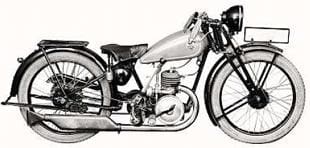
Took over the German Pheonix marque during the mid-Thirties, moving production to RMW Neheim-Ruhr plant. Made both RMW and Pheonix-badged machines in tandem, adding Bark two-stroke and Moser to the range of proprietary engines used. Motorcycle production of both marques ended in 1939. RMW attempted to restart motorcycle manufacture after WWII again using proprietary engines; few were sold (mostly under the RMW logo) and by 1955 all attempts at rejoining the motorcycle world had ended.
Roamer c1938-c1950s Australia
Brand awarded by Norman to models supplied in kit form for assembly and sale under licence in Australia.
Roc 1904-15 UK
Well-respected motorcycle maker founded by AW (Arthur) Wall and run with development funding from his brother-in-law Sir (Dr) Arthur Conan-Doyle. Development and production began at Guildford, Surrey, but later transferred to Hay Mills, Aston, Birmingham.
Wall had an exceptionally fertile engineering mind, developing concepts which often bucked the trend. Unfortunately, no matter how good his ideas and how much they were admired, the majority of the buying public will pay for the usual and seldom the unusual.
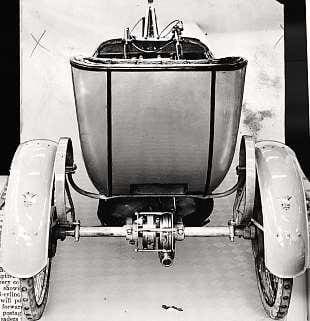 Motorcycle production included 2 to 31⁄2hp singles and even larger V-twins, often in longer than normal frames. Many models featured Roc’s two-speed epicyclic hub gear, some were started with a car-type handle mated to a boss in the rear wheel hub. Later Roc developed its own gearbox. Most models used either Roc’s engines or Precision power although Villiers 269cc units were used for some 1914/15 lightweights.
Motorcycle production included 2 to 31⁄2hp singles and even larger V-twins, often in longer than normal frames. Many models featured Roc’s two-speed epicyclic hub gear, some were started with a car-type handle mated to a boss in the rear wheel hub. Later Roc developed its own gearbox. Most models used either Roc’s engines or Precision power although Villiers 269cc units were used for some 1914/15 lightweights.
As well as Roc motorcycles, Roc engines and Roc gearboxes/hub gears, AW Wall also designed three and four-wheeled cyclecars and the flexibly mounted Wall autowheel. Designed as an 80cc two-stroke unit in 1909, doubled to a 160cc two-stroke twin by 1910, Arthur Wall had dropped out of this venture by 1912 when production was started by the International Auto-Wheel Co Ltd. The engine had become an automatic inlet valve over side exhaust 118cc single-cylinder four-stroke.
Rockson 1920-23 UK
Let’s deliberately misquote the bard…’To feature or not to feature? That is the question.’ On the face of it the Rockson is a non-starter for this book which is aimed at motorcycles for which a handful at least survive and the odd one has been offered on the open market, whether privately, by dealer, auction, autojumble, eBay or whatever. Important history has dictated the rules are broken occasionally, but still the Rockson wouldn’t have got a mention.
Modern encyclopaedias tell us: ‘Rockson were an assembler of machines 1920-23 using 269cc Villiers and 346cc Blackburne power.’ A reasonable insertion for a long-forgotten maker. Clearly all had gone to the same original source of information, as Blackburne fans know the 23⁄4hp model measures 71 x 88mm which gives 348.55cc and was usually quoted in period as 348cc. Despite my anorak-type love of minutiae, the encyclopaedia insertions remain reasonable and helpful.
With no known survivors listed in any of the recognised listings, none offered for sale in recent years and none appearing at major events, Rockson would have remained forgotten. But earlier in the year, Ian Munro – a known classic enthusiast restored a 348cc Rockson and his friend – whose grandfather and great uncle built the machines – has another. Ian’s enthusiasm for the marque and his friend John Rock’s association to the Rockson persuaded me not to overlook the Rockson and it serves as an example of how much information on even rare marques survive.
Rockson motorcycles were built by JS Rock and Sons, Beecher Works, Cradley, Staffordshire. In common with many smaller makers they bought in most components. Likely as not they used either lugs or frame kits from either Chater-Lea or Sun Cycle and Fittings Co Ltd, proprietary front forks, mudguards and combined fuel/oil tank. As we already know JS Rock and Sons favoured Villiers or Blackburne power, to which they added Burman gearboxes and Best and Lloyd drip-feed oiling.
Taking 1923 as an example, they offered five models: single-speed push-start belt drive Model A with Villiers 269cc engine at £34; two-speed push-start clutchless chain-cum-belt drive Model B, with 269cc Villiers engine at £39; two-speed kick-start clutched chain-cum-belt drive Model C, with 269cc Villiers engine at £45; three-speed kick-start clutched chain-cum-belt Model D, with 348cc Blackburne engine at £60 and three-speed kick-start clutched all-chain drive Model E, with 499cc Blackburne engine (unusual choice as most makers favoured 548cc).
A similar range was offered in 1922 at slightly different prices but for 1924 Rockson disappeared from the listings, indicating they’d ended motorcycle production but hopefully survived as an engineering company. With two known survivors, Rockson perhaps warranted a couple of lines in the guide but Ian and John’s enthusiasm fired me to a have a little dig in my archive for this demonstration of what information survives.
Rohr 1952-57 German
Agricultural machinery manufacturer, which branched-out into scooter production. Some period observers cruelly claimed the 197cc Ilo-engined Rohr Roletta scooter looked pretty agricultural, a view not helped by its boar’s snout-like headlamp. In reality, it looked a little like the successful Zundapp Bella scooter with an unusual headlight mounting.
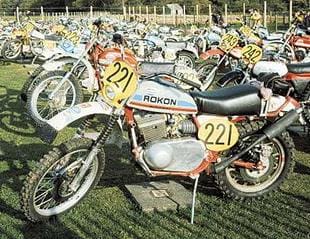 Rokon c1959- USA
Rokon c1959- USA
What motorcycle can carry nine gallons of liquid in its wheels yet float on water when empty, pull a plough or climb near vertical slopes and is a favourite of hunters, construction site workers and farmers alike? Naturally… the unique Rokon.
Founded by a young engineer, Rokon have built unusual motorcycles, enduro models and Moto-tractors at a number of plants including Wilmington, Vermont and Keene, New Hampshire. The original machine, named the Trail-Breaker, was powered by a 133cc 8bhp Chrysler two-stroke engine, which drove both wheels via a power train running through the main backbone of the machine’s chassis. The large drum-type wheels, each capable of holding 4.5 gallons of fluid are shod with low pressure agricultural tyres. Emptied, the wheels served as floats, enabling the machine to be towed across stretches of deep water while remaining afloat.
Able to easily carry a 75lb load as well as its rider the Trail-Breaker featured a unique over-ride slip mechanism to the drive train, allowing the front wheel to rotate marginally faster than the rear to give – it was claimed – better handling and steering. The versatile machine, when fitted with an outrigger style flat bed sidecar, could carry substantial loads and even serve as a lightweight tractor for light farm duties including pulling a single furrow plough, driving a rotovator or pulling a wide grass cutter with a donkey engine driving the cutting cylinder.
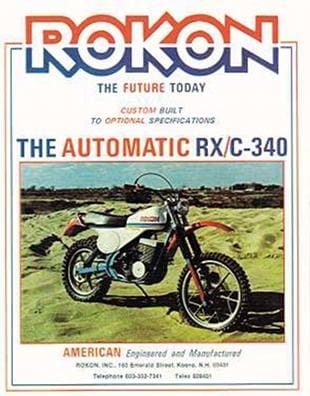 Although a bizarre motorcycle – and one I’ve more than once taken the rise out of! – there is no denying the Rokon earned an enviable reputation and has been used on many explorations. Apart from being much cheaper than four-wheeled options, the light Rokon Trail-Breaker or later Moto-tractor with huge tyres readily travels over deep mud or loose sand where other heavier vehicles would dig in.
Although a bizarre motorcycle – and one I’ve more than once taken the rise out of! – there is no denying the Rokon earned an enviable reputation and has been used on many explorations. Apart from being much cheaper than four-wheeled options, the light Rokon Trail-Breaker or later Moto-tractor with huge tyres readily travels over deep mud or loose sand where other heavier vehicles would dig in.
By 1966, Rokons were being exported almost worldwide, leading the company to relocate all production to the Keene, New Hampshire factory. Looking to new markets, Rokon developed an enduro style machine in the early Seventies, coded RT-340. Comprising a Sachs 340cc two-stroke engine housed in a handsome tubular frame it had automatic transmission, disc brakes and some examples even boasted cast magnesium wheels. It went on sale in 1973.
Pre-production models were extensively tested and one took a Gold award in the 1972 Two-Day International Trial at Berkshire. Soon the Rokon earned its place in the US ISDT team. As well as continuing to develop the RT-340 series automatic enduro machines, Rokon continued to upgrade the original Trail-Breaker into a range of truly useful machines, or Moto-tractors as the factory renamed them.
Although their tiny two-stroke engines were upgraded to give 10bhp they at first glance appear puny. Yet these robust Moto-tractors continue to give decades of hard service, pulling up to quarter of a ton loads on trailers over almost any terrain then could turn their hand to ploughing, raking, grass cutting, seed sowing… In fact all the work of a mini tractor, and although not cheap they still cost only a fraction of the cost of a small tractor.
Rokon has gained a cult following, split into Moto-tractor or enduro camps.
Roleo (CP Roleo) 1924-39 France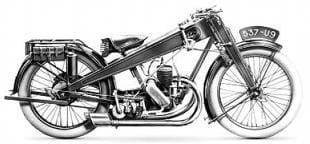
Parisian (64 rue de la Folie, Mericourt) maker of both conventional and the unconventional. Using proprietary engines from Chaise, JAP, LMP, Staub, Voisin and possibly others housed in tubular frames CP Roleo built up a range of tidy conventional motorcycles. However, the firm also designed a range of unusual frames assembled from a mix of pressed steel and cast-iron members, some with tubular cradle under the engine.


